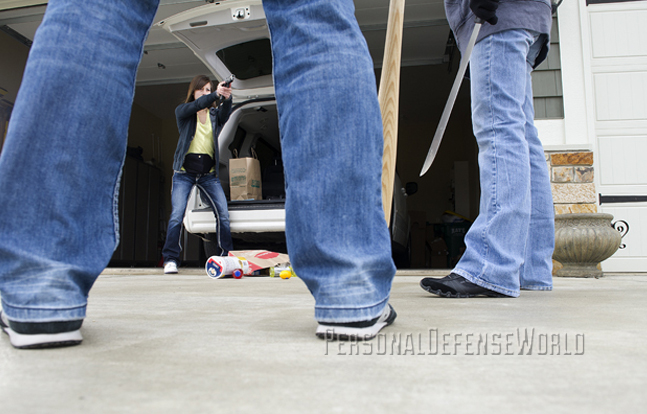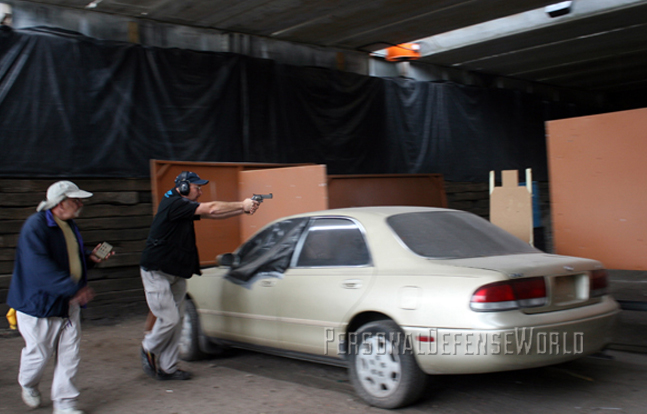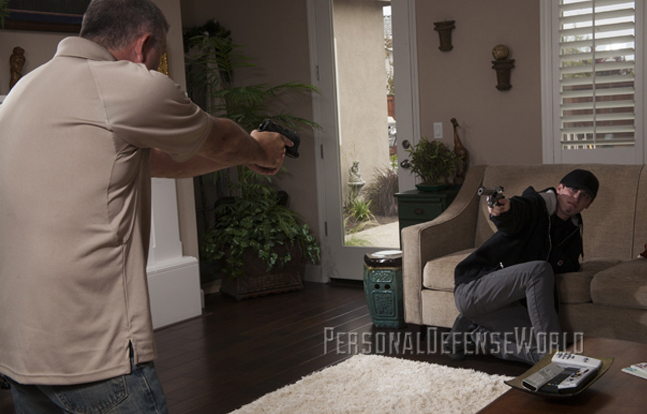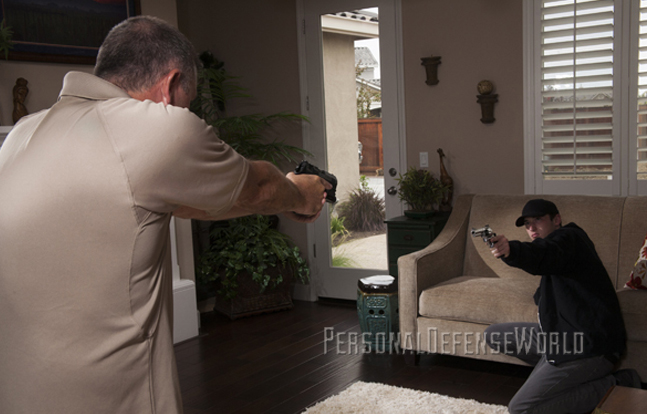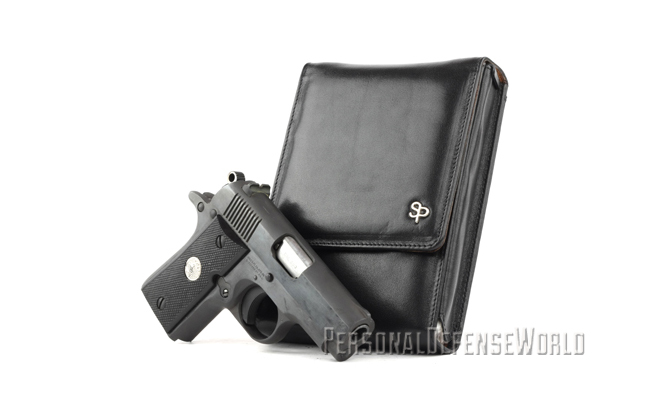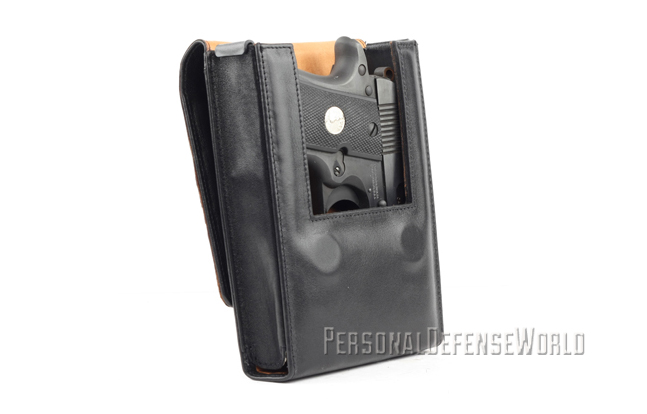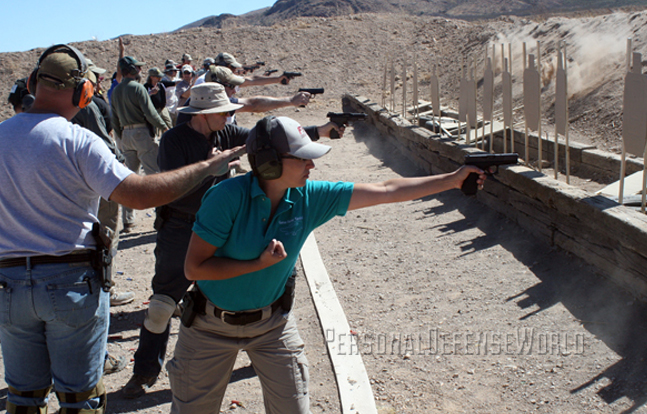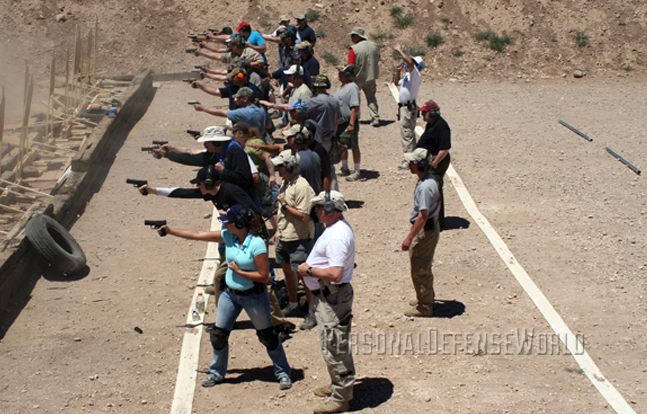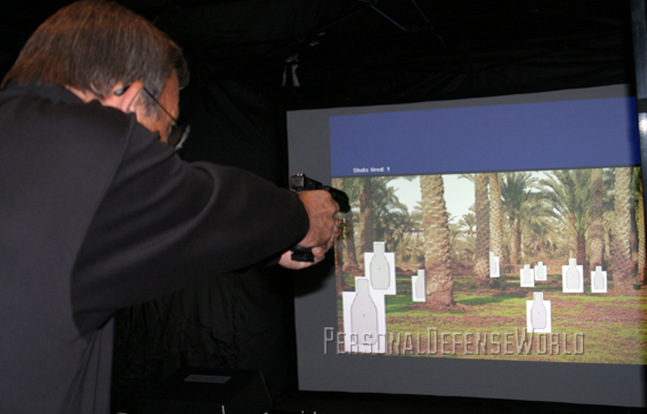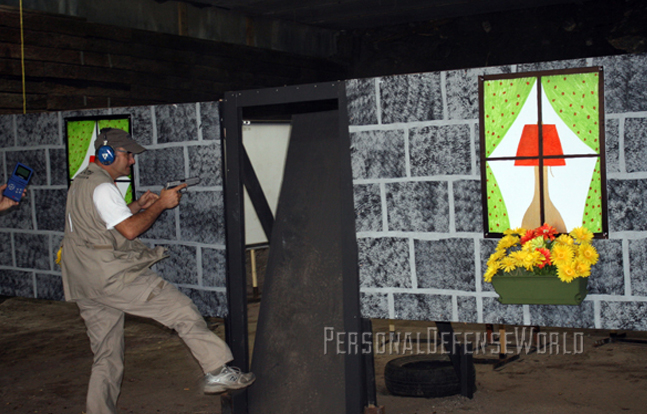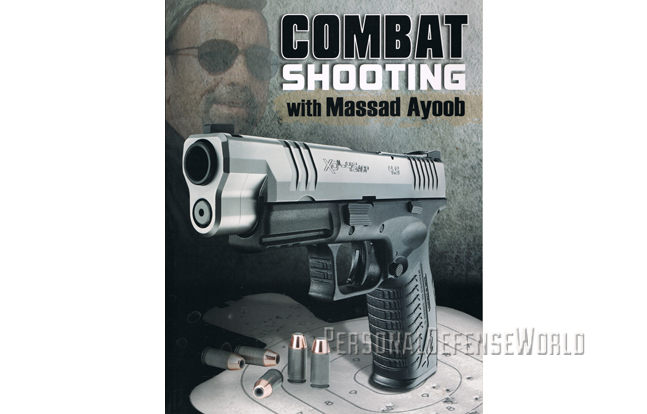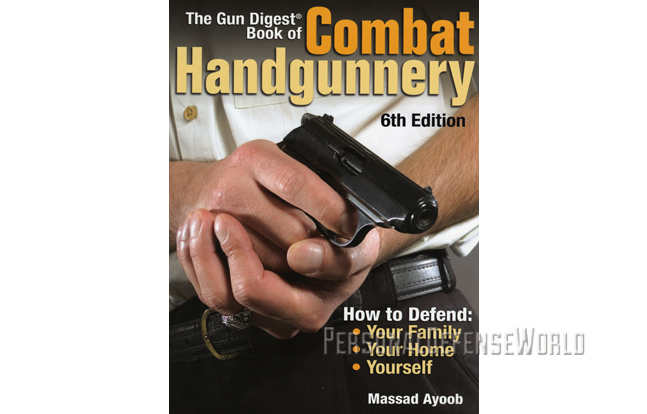Gun Training – Speed’s fine, but accuracy’s final.
It was Jeff Cooper, I believe, who said that owning a Stradivarius doesn’t make you a violinist and owning a gun doesn’t make you a gunfighter. The gun is a powerful tool, categorized at law as a lethal weapon. It is potentially dangerous, and therefore it is incumbent upon its user to know both how and when to properly employ it.
In any sort of education, one builds a foundation and then proceeds to the fine points. This area of knowledge and expertise is no different. Let’s chart a course for beginners on up.
Start With Safety
No matter how familiar we are with firearms, we can never forget that “familiarity breeds contempt.” If the gun was purchased for defense, it’s going to be loaded. We’ll be carrying it, putting it on, taking it off, checking it, disassembling and cleaning it, loading and unloading it, again and again and again. We’ll often be doing that in the presence of the people we most love, the people we bought that gun to protect. Safety can never be shortcut. We need to have layer after layer of safety nets. The most important of those safety nets is constant vigilance.
Advertisement — Continue Reading Below
Your firearms safety instructor will tell you to keep the muzzle in a safe direction whenever you handle the gun. So, where in your home or place of business is a safe direction? There is a product by that very name, Ravelin Group’s Safe Direction, a ballistic pad designed for this very purpose and sized to fit a briefcase or even a three-ring binder so you can have it with you anywhere. Another option is a densely packed bookshelf. A well-packed bookcase can also serve as a backstop for dry-firing (another important safety protocol) and, for that matter, as strategic cover during a home invasion. The walls of an empty room may have living people on the other side, the ceiling won’t shield someone on the floor above you, and the floorboards won’t necessarily stop a carelessly launched bullet from killing someone on the floor below yours.
Fundamentals
We all have to crawl before we walk, and walk before we run. Jumping into a tactics class without knowing the fundamentals of shooting is like learning to swim by flinging yourself off the dock and seeing if you can make it back to shore. Fundamentals begin with loading and unloading safely and efficiently and with learning the general mechanics of the gun, its “manual of arms.” Fundamentals include grasp, stance, sight picture, sight alignment and, above all, trigger control.
The student then and only then builds toward faster shooting without sacrificing good accuracy. It is axiomatic in firearms training that accuracy comes before speed. Starting with fast shots and then trying to group the hits more tightly is like pushing a rope. Focus on developing accuracy, and then accelerate speed, with emphasis on smoothness. The great Ray Chapman, the first world combat-pistol champion, famously said, “Smoothness is five-sixths of speed.” Consider also the words of Texas Ranger John Hughes, credited with killing more than two dozen outlaws in gunfights from the late 19th to the early 20th century, a saying that was popularized by another great gunman, Bill Jordan of the Border Patrol: “Speed’s fine, but accuracy’s final.”
Advertisement — Continue Reading Below
Next, the new student should be learning speed reloads and sustained rapid fire. Basic shooting will have begun at close range, perhaps at as little as 3 or 4 yards. Then move to seven paces. Then 10, 15 and 25. Longer-range shooting is a more advanced skill, certainly one worth learning, but far from the best place to start. Learn to safely and swiftly draw, and safely and deliberately holster, early on. Working from the holster is best done with a triple-checked, unloaded gun, or a dummy gun, before doing so with live ammunition.
Advanced Skills
The student who has a solid grasp of the basics should progress to multiple targets. Other advanced tactics include techniques for shooting from behind cover, firing from awkward positions such as “downed shooter” postures, and even one-handed reloading and malfunction clearing. Long before that, though, the student should learn to draw from a strong-side holster with the non-dominant hand, and before even that, how to manipulate and fire the weapon “weak hand only.” Shooting while moving is difficult even with a static target. It’s even more difficult than standing and shooting a moving target, which should also be part of an advancing curriculum. More difficult than either is the situation in which both shooter and target are moving.
Once the fundamentals are nailed down, the shooter wants to concentrate as much as possible on reaction targets—that is, targets that move or otherwise react to the shot. If we ever need the gun for our survival, after all, our opponent is “the ultimate reaction target.” It’s one thing to carefully index your weapon on a piece of paper or cardboard that stands motionless or even swings in an arc, knowing that you’ll get your hits scored by the instructor or range officer soon enough. It’s something else entirely to try to maintain that visual index while your brain is screaming, “To hell with sight picture. Look and see if that thing trying to kill us has fallen down yet!”
Advertisement — Continue Reading Below
Reaction targets habituate you to trust the sights and the reactions you see in secondary or tertiary focus, and to maintain your primary focus on the front sight. This is all the more important for a “precision shot,” firing through a narrow “window of opportunity” or at a distant target. I don’t care if you shoot Bianchi steel plates, like the ones set a couple hundred yards away from me as I write this, or an Action Target Dueling Tree, like the one I can see from my desk if I turn 180 degrees and open the porch blinds. Another option is bowling-pin matches, where if you don’t center-punch that piece of wood it will roll in unpredictable directions at unpredictable angles and force you to shoot it again. Heck, you can shoot tin cans off a fence post if you have to, so long as you have a safe background. In a given year, I’ll try to shoot all of the above, though I use mostly steel because it’s quick to reset and more time- and cost-effective.
Another form of reaction target training, if you can find it in your area, is high-tech simulated gunfighting as found with the FATS or MILO systems. The laser beams from your gun hit the bad guy who’s shooting at you from the movie on the screen, and he’ll react accordingly. It ain’t cheap or easy for a private citizen to find, but it’s great reaction training. It’s also great training for judgment, which leads to another important area.
When To Shoot
Knowing when to pull the trigger on that defensive firearm for real is every bit as important as knowing how. Even though I’ve had to place it late in this article, it is one of the cornerstone fundamentals and should be taught very early, in about the same time frame as safety and shooting basics.
Advertisement — Continue Reading Below
Do you ever find yourself saying “all that matters is that it’s a good shoot” or “never say a word to the cops after a self-defense shooting”? If so, it’s a red flag that you need to learn lethal-force law and the often underhanded trial tactics that clueless or politically motivated prosecutors and greedy plaintiff lawyers use to manipulate it. That’s what this writer has specialized in for many years, 29 years with Lethal Force Institute and four years now with Massad Ayoob Group. My classes are, for the most part, “a major in When and a strong minor in How.” For shooters already skilled in the mechanics and tactics of shooting, we have a classroom-only, 20-hour program offered on weekends that covers the rules of engagement for armed private citizens. Does it sound like blatant self-advertising to recommend my own course? So be it. I still recommend it.
Honing Your Skills
Some eyebrows go up in my classes when I tell my students that, if they’re serious about becoming skilled with the gun, they’ll never practice with a pistol again. Then I explain that where they “practiced” before, they should now “train.” Training is purposeful and geared toward goals. Putting a couple hundred bullets downrange may do nothing more than entrench bad habits. Taking just 50 rounds, and firing each with a purpose—“Today I’ll shoot the police qualification course at X percent or determine why I failed to do so,” or “Today I’ll draw and fire an acceptably centered shot in Y seconds or know why I didn’t”—is training.
I strongly recommend shooting in combat-oriented competition. USPSA, Steel Challenge, pin matches and even PPC are good, and all give you a piece of the puzzle. My single favorite discipline, though, comes from the IDPA (International Defensive Pistol Association), where most draws are from concealment and the sport is oriented toward “street guns” more than purpose-built “race guns,” while fight-stopping hits, use of cover and solid tactics are emphasized over raw speed. The fact is, though, that any quality trigger time is well invested time.
Advertisement — Continue Reading Below
When you shoot in competition, you habituate yourself to dealing with that crushing “This is it!” mentality. It helps to make shooting under pressure the norm. I discuss this in much more detail in my book published by the folks at Gun Digest, Combat Shooting with Massad Ayoob. But the bottom line is this: People who have experience in competitive shooting seem to have an extraordinarily high hit ratio and survival ratio in actual gunfights.
Beyond The Gun
Survival of violent encounters is a multidimensional discipline. Study body language and assaultive behavior cues, and you’ll be ahead of the curve in recognizing danger in time to respond to it successfully. The single best instructor I know in the field right now is Major Tania Penderakis, who teaches at Athena Training Solutions. Take one of her classes—you won’t regret it.
Learn first aid for serious trauma, and if you have done so already, learn how to self-apply it. If you’re wounded, assistance may be a long time coming, and in the real world the gunfire goes in both directions. Even if you prevail unscathed, you may have fought only because the attacker had grievously wounded a good person already, and you may be the only one who can help that victim in the immediate aftermath once you have decisively stopped the threat. Look up Doc Gunn at Defense Training International’s website; his classes, I am told, are excellent. Read the book by emergency surgeon Jim Williams titled Tactical Anatomy and take his class by the same name, as I have. It’s worth its weight in gold—and in life’s blood.
Advertisement — Continue Reading Below
Acquire intermediate force weapons, and get documentable training with them. From the Kubotan of Soke Takayuki Kubota to pepper spray, less-lethal weapons will solve a whole lot of problems that don’t rise to the level of deadly force. As a wise policeman once said, “There is a vast gray area between a kind word and a bullet.” In the same vein, get as much training as you can in hand-to-hand combat. That and the gun will cross paths in another important area of study for you, disarming attackers and gun retention. Retention—defeating the criminal’s predictable threat to disarm you—is vitally important. So is being able to take his weapon if you don’t have your own or if his is easier to reach than yours, which is often the case in the real world.
Final Thoughts
Self-defense is a complicated, multidimensional discipline. It’s hard to buy into the K.I.S.S. principle if it ain’t simple and you ain’t stupid. Truth be told, it’s a life study. The good news is that, on the gun and martial arts side at least, it’s fun to learn. The ranges and the dojos are as much places of recreation as places of learning, and that makes the learning more palatable. There are many fine instructors out there. Seek them out. You’ll find it rewarding in many ways. Good luck, and stay safe.
Athena Training Solutions
athenatraining.net; 850-387-1312
Advertisement — Continue Reading Below
Defense Training International
defense-training.com/docgunnres.html
Massad Ayoob Group
massadayoobgroup.com
Ravelin Group
ravelingroup.com; 630-834-4423
Advertisement — Continue Reading Below
Tactical Anatomy
tacticalanatomy.com
BUY NOW! AT www.personaldefenseworld.com/subscribe/personal-home-defense/.
